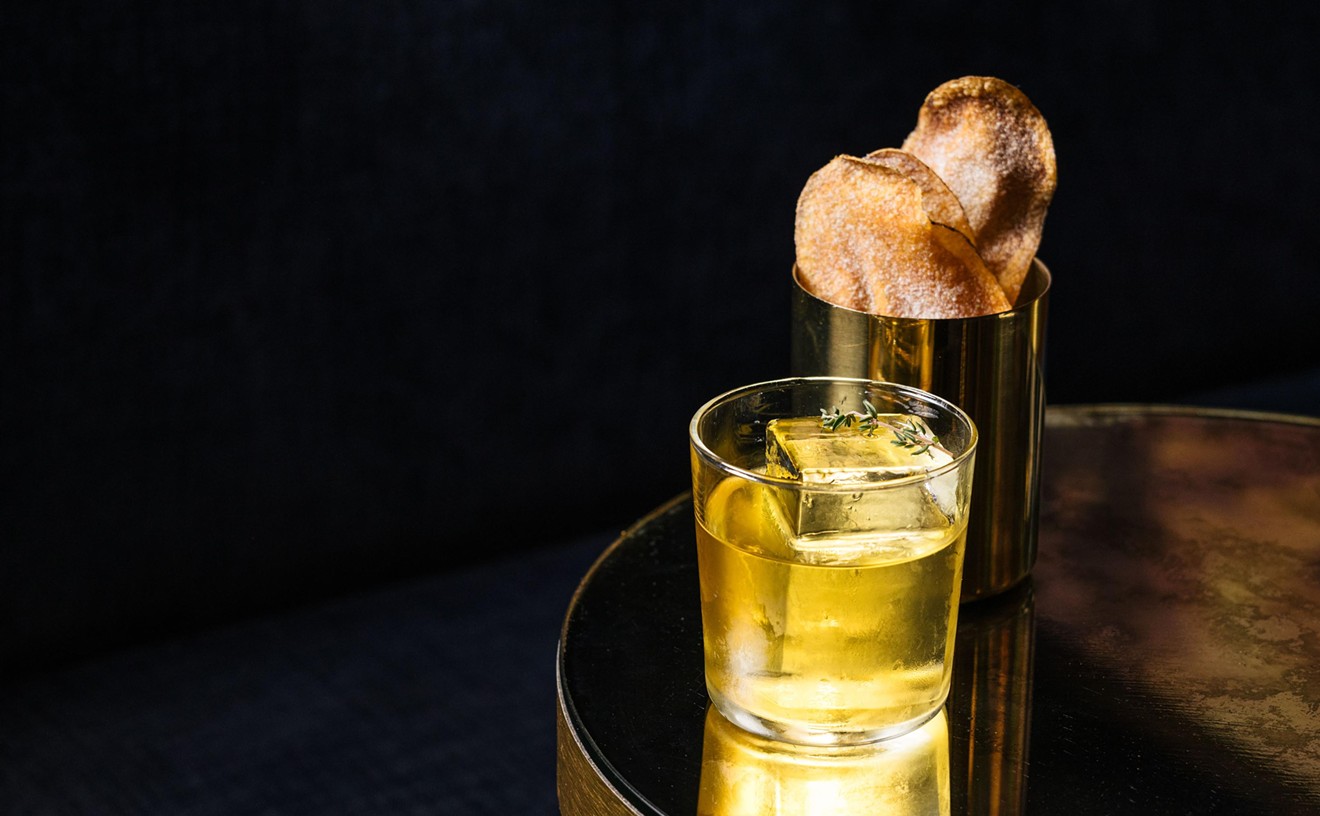Beer: Salut! Brewery: Old Bisbee Brewing Co. Style: ? ABV: 4.9 percent
Not to be braggadocious, but I drink a lot of beer. Probably more than a reasonable and healthy person should, but that's an intervention I'd rather have later. Through putting together these columns, attending beer festivals, participating in judging sessions and good old-fashioned bar drinking, I've formally reviewed more than a thousand brews and have tasted hundreds more.
But never have I come across something like Old Bisbee Brewing Co.'s Salut. It's low in alcohol. It's sweetish and pleasantly funky. And, oh yeah -- it's almost perfectly clear. How? Why?
See also: What's With All the Pumpkin Beer Already?
To understand, we first have to step in the Wayback Machine and travel to France in the year 1863, when winemakers had begun to notice a major problem. Several years before, a species of aphid known as the grape phylloxera had made the journey from North America to France and proceeded to go to town on the country's vineyards. The bug would eventually cause a full-on blight, destroying about 40 percent of French grape vines and devastating the wine industry and, as a result, the French economy.
Skip forward to the early 2000s. Victor Winquist, a 40-year veteran of the wine industry, is sitting in a Parisian cafe and happens to notice an interesting painting.
"They were doing a salute over this beverage," Winquist says.
He asked about the odd-looking drink, and the Frenchmen told him that, after Phylloxera's ravaging of the vineyards, the price of wine had risen to such a point that brewers had been challenged to create a wine-like alternative that cafes could sell to their customers.
Intrigued, Winquist does some digging. He pores over old brewing and winemaking records, questions people around town about the old breweries. He finds that there wasn't just one product like this, but many -- though they were all similar. Eventually, he's able to piece them together into a recipe, which he brings back to Bisbee, Arizona and calls Salut.
Today, Winquist is reluctant to reveal all the components of his version of this historic brew -- "We don't really publicize the ingredients because it took us so long to come up with them ourselves," he says -- but he did share some aspects of the recipe. Salut begins with a mash of malted grain, though it's not barley or wheat, the cereals used to make most beers. This mystery-grain contributes sugars to the end product, but skips on both gluten and color. The enticing clarity of the beverage, Winquist says, "isn't due to filtration or anything. We just don't use any caramelized or toasted malt. The grain we use doesn't impart any color at all." The drink's lack of gluten, he says, is an equally important aspect.
"They say that 1 percent of the population has a problem with gluten, but I'd swear they all congregated around Bisbee," he says.
Like many of the beverages of the 1800s, Salut is made with elderberry -- in this case, Albanian elderberry flower extract. "You'd see these ingredients that were used initially for some purported medical use, but they became a common beverage in society," Winquist says. "In this case the elderberry extract was used that time in medical concoctions." Peach extract, also a common additive in sparkling wines in the 1800s, likewise finds its way into Salut. The concoction is then fermented with a strain of Champagne yeast but is held to fairly low carbonation levels.
"We carbonate to about half the level you normally do for beer," Winquist says. "We want to emphasize the native taste rather than the bubbles."
"Native taste" is a good way to describe what you get from Salut. Above a headless liquid clear as Tempe tap water (which is to say, not totally clear and slightly yellowish), the aroma is an odd blend of white grape and honeydew backed by a very subtle Easter egg dye funk. Flavors are gentle and fruity: pear, stone fruit and Chardonnay, again dotted with something slightly musty but not off-putting. The whole beverage reminds of a lightly flavored cider or wine cooler -- which, I guess, is the point.
"The niche, as you can imagine, is for people who don't like the taste of common beers," Winquist says.
The French eventually solved their little aphid problem by borrowing some North American grape vine roots, which were dense and resistant to phylloxera's attacks.
"To this day, over 90 percent of French vineyards are grafted onto American root stock," Winquist says. "But they don't really like to talk about that."
They also don't talk much about the beverage that inspired Salut -- in fact, the French government discouraged their production (to put it mildly) to avoid competition with the resurgent wine industry. The drink fell by the wayside in the land of its creation, existing only in paintings on cafe walls. But it lives on in Old Bisbee.
Zach Fowle is a BJCP-recognized beer judge and a Certified Cicerone. He works at World of Beer in Tempe.










